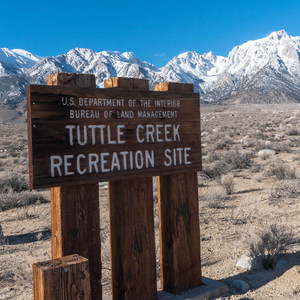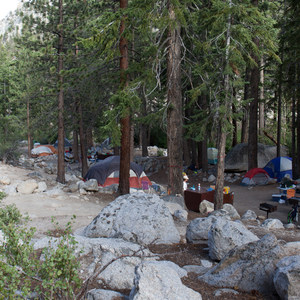Chicken Spring Lake Loop is a rewarding and moderately challenging 12.9-mile route in the Eastern Sierra that offers hikers a taste of the Sierra Nevada’s high country. This loop features stunning alpine scenery, including the serene Chicken Spring Lake and breathtaking views beneath Cirque Peak. Starting from the Cottonwood Pass Trailhead at Horseshoe Meadows, the loop follows a well-defined trail, ascending Cottonwood Pass and returning via the Pacific Crest Trail and Trail Pass.
GETTING THERE
From the small town of Lone Pine, CA take Whitney Portal Road west. Turn left onto Horseshoe Meadows Road and follow it for approximately 20 miles to the Horseshoe Meadows parking area. The road is paved but steep and winding, climbing to an elevation of over 10,000 feet. The trailhead for Cottonwood Pass is located near the Cottonwood Lakes campground, with ample parking available.
DESCRIPTION
Begin your hike at the Cottonwood Pass Trailhead, where the trail initially winds through a shaded forest of pines. The trail is well-graded, making the steady ascent to Cottonwood Pass manageable. As you climb, the trees thin out, offering expansive views of the surrounding peaks and valleys. After about 3.5 miles, you’ll reach Cottonwood Pass at 11,200 feet, where you’ll be rewarded with sweeping views of the Golden Trout Wilderness and beyond.
From Cottonwood Pass, descend slightly to reach the beautiful Chicken Spring Lake. This alpine gem is a perfect spot to take a break. The lake is framed by rugged granite peaks, and it's clear blue waters make it a popular destination for both day hikers and backpackers.
After visiting Chicken Spring Lake, head south on the Pacific Crest Trail (PCT). The trail is well-defined and offers occasional views of the southern Sierra peaks. After several miles, you’ll reach Trail Pass, where you’ll take the trail leading back to Horseshoe Meadows. The final stretch of the hike descends gradually through a forested area, returning you to the trailhead where you began.
FLORA AND FAUNA
This route showcases a variety of Sierra flora, including lodgepole pines, foxtail pines, and wildflowers like lupine and paintbrush in the summer months. Wildlife sightings may include marmots, mule deer, bears, and various bird species.,
CONSIDERATIONS
Altitude: The hike starts at a high elevation, so be mindful of altitude sickness. Take it slow, stay hydrated, and listen to your body.
Weather: Afternoon thunderstorms are common in the Sierra during the summer. Start your hike early to avoid potential storms.
Navigation: The trail is generally well-marked, but carrying a map or GPS is recommended.
Leave No Trace: This area is pristine and heavily used by hikers and backpackers. Pack out all trash, and respect the natural environment.





























Comments
Sign In and share them.